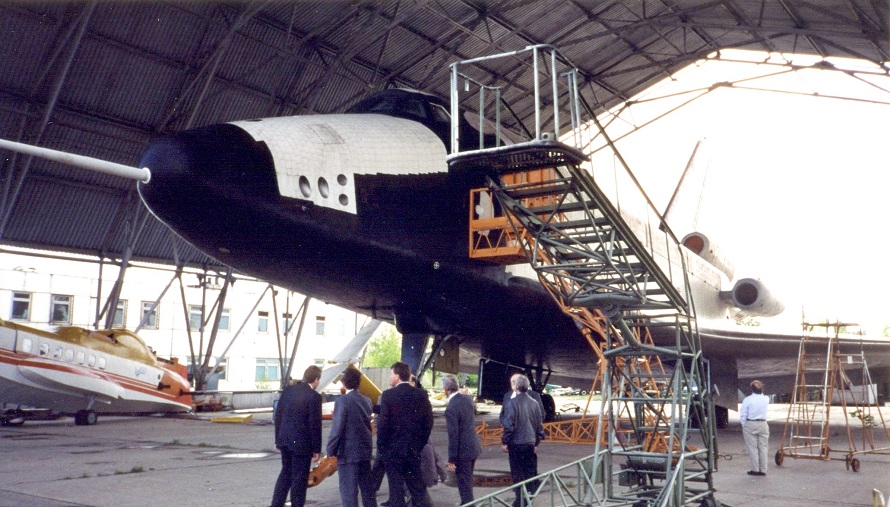Aviapetstrans Yamal
Type: Twin-turboshaft cargo/passenger multi-purpose amphibian.
Program: Work performed by five scientific and research institutes and aviation design bureaus under Gosaviaregstr supervision, consistent with FAR requirements. Development delegated to Myasishchev OKB. Full-scale mockup exhibited at MosAeroshow '92; prototype was to be manufactured in Moscow; first flight was scheduled early 1998.
Design features: Basically conventional small amphibian. Unique power plant; two turboshafts side by side on top decking over center-wing section, driving single pusher propeller mounted behind tail unit, through helicopter-like reduction gearbox; position of air-intakes protects them from water and foreign object ingestion. Flying-boat hull and two fixed underwing stabilizing floats. All between-flights servicing of systems and equipment possible from technical bay inside fuselage; access to engine inspection points is provided through access panels in technical bay ceiling, protecting engineer from low temperature, precipitation, mosquitoes, and effects of waves on water. Similar access practicable to remedy in-flight failure.
Landing gear: Retractable tail wheel type; twin wheels on each main unit; all units retract upward, main units into sponsons each side of hull. Optional nosewheel gear under development.
Power plant: Two RKBM RD600S (TVD-1500) turboshafts; six-blade propeller, dimensions and aerodynamics similar to those of of Il-114 propellers. Fuel tank, capacity 2,400 kg (5,291 lb), between spars on each wing.
Accommodation: Provision for 18 passengers from land, 15 from water, or freight stretchers and medical equipment, cameras, equipment for variety of commercial and military duties.
Avionics: Radar in nose thimble.
Equipment: Optional equipment being developed for ecological monitoring, forest protection and firefighting, ice and fish reconnaissance, 200 mile economic zone patrol, and air/sea rescue.
Dimensions external
Wing span: 21.40 m (70 ft 2.5 in)
Length overall: 16.825 m (55 ft 2.5 in)
Height overall: 5.367 m (17 ft 7.5 in)
Dimensions internal
Passenger cabin volume: 23.4 cu m (826 cu ft)
Areas
Wings, gross: 51.9 sq m (558.7 sq ft)
Weights and loadings
Max payload: 2,000 kg (4,410 lb)
Performance (estimated at max T-O weight)
Max cruising speed at 7,500 m (24,600 ft): 235 kts (435 km/h; 270 mph)
Econ cruising speed at 7,500 m (24,600 ft): 202 kts (375 km/h; 233 mph)
T-O run on land: 225 m (740 ft)
T-O run on water: 230 m (755 ft)
Range with max payload at max cruising speed: 631 n miles (1,170 km; 727 miles)
Range with max payload at econ cruising speed: 755 n miles (1,400 km; 870 miles)
Range with 500 kg (1,100 lb) payload at max cruising speed: 2,212 n miles (4,100 km; 2,547 miles)
Range with 500 kg (1,100 lb) payload at econ cruising speed: 2,374 n miles (4,400 km; 2,734 miles)
Source: Jackson, Paul editor. Jane's All the World's Aircraft 1995-96 Jane's Information Group Limited 1995 pp. 308-309.

